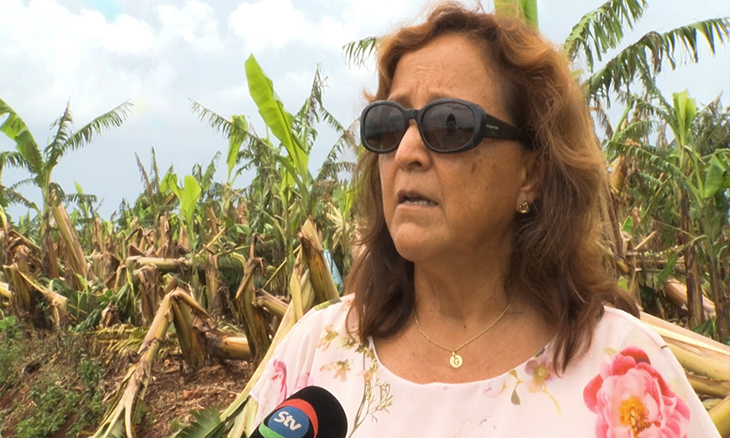Mozambique: March cyclone caused nearly €1.6 million in losses for EDM
Mozambique: Cyclone Gombe causes 100 million meticais of damage in banana plantation

Photo: O País
The largest banana plantation in Nampula has lost more than 100 million meticais following the destruction by Cyclone Gombe of 750 hectares of banana production. This year, an anticipated 10,000 tonnes of bananas will not come to the domestic market, and the next eight months may see shortages.
It is by far the worst crisis that the Jacaranda group has recorded since it established operations in Mozambique 12 years ago. With a long experience in agribusiness, the Latin American group acquired the farms of the extinct Matanuska concern and invested heavily in the already existing banana plantation that the former owners had given up on following an outbreak of Panama disease.
The scenario at Fazenda do Rio Monapo is bleak.
“The situation is very critical,” says manager Gladys Tazan. “We are assessing the damage thoroughly. We have around 1000 workers, 800 permanent and 200 employed on a temporary basis, but we had to let the temporary ones go, and we are evaluating reducing our cultivated area, so some permanent workers will probably also have to leave.”
For this year, production of 20,000 tonnes of bananas was expected, 10,000 for export and the same amount for the domestic market, but losses have cast all plans into disarray, and managers say that they will have no bananas for at least for the next eight months.
From figures ‘O Pais’ has had access to, Jacaranda produces 815 tons of bananas per month.
“The days are uncertain,” Tazan continues. “If we take into account damage on other Jacaranda farms, with the destruction of 750 hectares of bananas, of 15,000 cashew trees, of 4,500 chickens and the destruction of 15 buildings, losses amount to 449,972,200 meticais.”
“We ask for help,” Tazan appeals, with a look of desolation, “because we cannot get back on our feet on our own.”
In her conversation with O País Económico, Tazan noted that Jacaranda had not resorted to bank financing for the investment because, at this point, it would be another unresolved dilemma.
Family farming is, for now, the main concern, as it is the source of survival for most of the population, and it seems that corn has also suffered, although still standing and likely recoverable. Sesame and cotton, two other cash crops, also show signs of resilience.
However, according to the provincial government of Nampula, a total of 29,562 hectares of crops were flooded, including cash and food crops. Assessment of the possible impact on food security is ongoing.
By Ricardo Machava











Leave a Reply
Be the First to Comment!
You must be logged in to post a comment.
You must be logged in to post a comment.